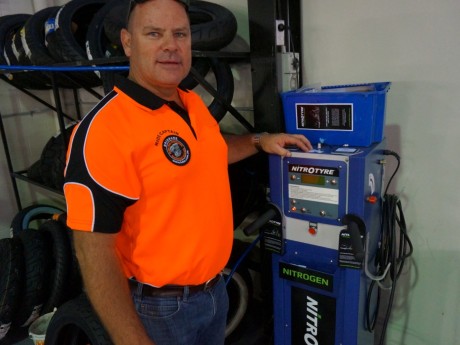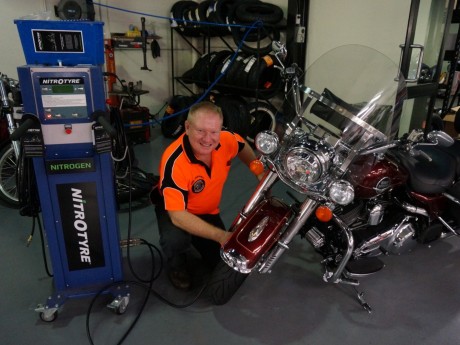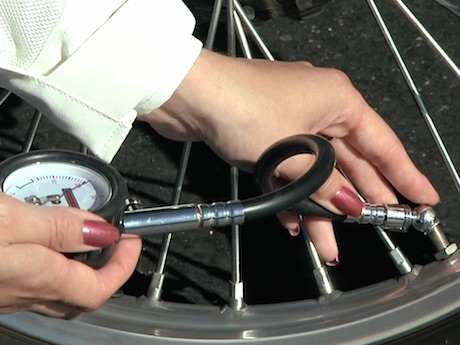Motorcycle tyres are only as good as the pressure in them and that means regularly checking them or filling with nitrogen which keeps the pressures consistent for longer.
Nitrogen has long been used in racing, heavy transport and aviation, but is only now commercially available for cars and even motorcycles.
Nitrogen is a colourless, odourless, non-reactive gas that occurs naturally in about 80% of the atmosphere.
The advantages for motorists of nitrogen over normal air are reported to be numerous, but there is debate about some of the claims.
Because of its relatively inert chemical structure, nitrogen doesn’t leak out through the porous tyres as quickly as regular air.
That means your tyre pressures will be consistent for longer which means you will retain handling, grip and braking performance for longer.
It also means your tyres won’t develop fatigue cracking or wear out as quickly or irregularly. Having proper tyre pressures also improves fuel economy.
Nitrogen is also claimed to keep tyre pressures more constant because it doesn’t heat up as much as air. So when you test your tyre pressures cold and then when the tyre gets hot, they won’t have increased by much. This is also good for consistent performance and low wear.
However, claims that nitrogen doesn’t heat up like normal air are debatable as it largely depends on the moisture content of the gas. More moisture means it heats up more.
Moisture in the air in your tyres can also react with wheel rims and cause some rust spots.
While nitrogen is a drier gas than air, it can still contain some moisture.

However, Nitrotyre nitrogen is a commercially available high-purity nitrogen gas, free of oxygen and moisture, so it shouldn’t heat up as much and is less likely to cause corrosion.
While nitrogen has only a marginally larger molecular size than oxygen, the nitrogen in Nitrotyre is claimed to be four times larger than the oxygen molecules in regular air, which should mean it won’t leak as quickly.
Heavy Duty Motorcycles is one shop that is retailing Nitrotyre for motorcycles with a $49.50 deal for a year. That includes free top-ups and replacements if you get a puncture or you ever need to top up the tyres elsewhere with normal air.

Sales manager Simon Yates claims that a motorcycle tyre filled with regular air loses 1psi a month, but a tyre filled with Nitrotyre loses 1psi in six months.
Simon says that because nitrogen-filled tyres don’t heat up as much, they also don’t increase in pressure as much with use. Therefore he suggests running 2psi more than prescribed by the manufacturer.
If you do fill your tyres with nitrogen, you need to expel all the air in the tyres first. This eliminates most moisture, otherwise it tends to negate the benefits of pure nitrogen.
Since nitrogen costs money and air is free, you should do your own sums on whether the savings in tyre wear and improvement in performance make it economically sound.
If not, then you should check your tyre pressures every week! Even if you do use nitrogen, make sure you check pressures regularly as your tyre can still develop leaks.
Dry compressed air may have much of the same benefits as pure nitrogen and remember, there is already almost 80% nitrogen in any air you use in your tyres.



